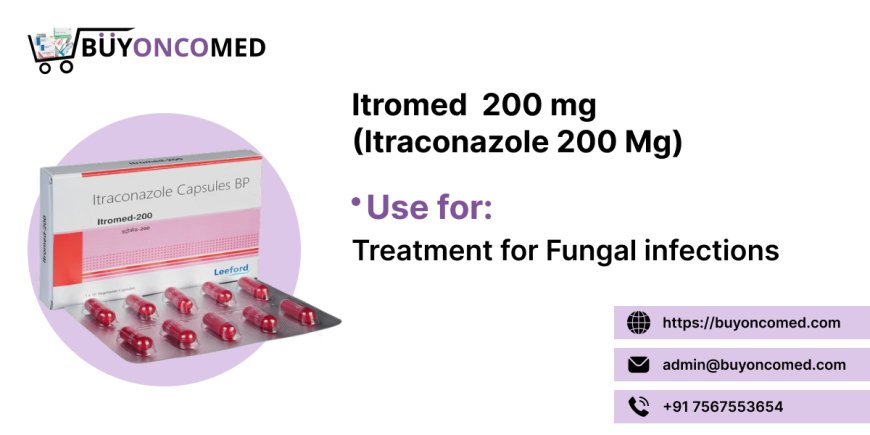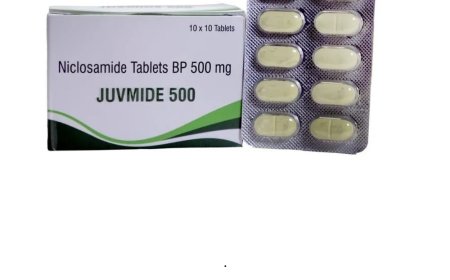What does itraconazole treat?
Itraconazole is a potent broad-spectrum antifungal agent that plays a vital role in treating various fungal infections, especially those resistant to conventional therapies.

Overview:
Itraconazole is a potent broad-spectrum antifungal agent that plays a vital role in treating various fungal infections, especially those resistant to conventional therapies. At our clinic and through extensive pharmaceutical experience, we rely on itraconazole as a cornerstone medication for managing deep and systemic mycoses.
This article explores all itraconazole uses, mechanisms, indications, contraindications, and treatment protocols.
Overview of Itraconazole and Its Mechanism of Action
Itraconazole belongs to the triazole class of antifungal agents. It works by inhibiting the cytochrome P450-dependent enzyme lanosterol 14?-demethylase, which is essential for converting lanosterol to ergosterol a key component of the fungal cell membrane.
Without ergosterol, the fungal cell membrane becomes unstable and permeable, leading to fungal cell death. This makes itraconazole highly effective against dermatophytes, yeasts, and dimorphic fungi.
Common Fungal Infections Treated with Itraconazole
1. Histoplasmosis
Itraconazole is the first-line treatment for mild-to-moderate histoplasmosis, especially in immunocompromised individuals. Its used for pulmonary and disseminated forms.
- Dosage: 200 mg once or twice daily
- Duration: 612 months
2. Blastomycosis
Itraconazole effectively treats blastomycosis in patients who dont require hospitalization. It suppresses the infection and prevents relapses.
- Target Fungi: Blastomyces dermatitidis
- Treatment Period: Up to 12 months
3. Sporotrichosis
For lymphocutaneous and fixed cutaneous sporotrichosis, itraconazole is the drug of choice.
- Dosage: Itromed 100 Itromed 200 mg daily
- Duration: 36 months
4. Onychomycosis
Itraconazole is FDA-approved for treating fungal nail infections (onychomycosis) caused by dermatophytes and Candida species.
- Pulse Therapy:
- Fingernails: 200 mg twice daily for 1 week/month (2 months)
- Toenails: Same regimen for 34 months
5. Aspergillosis
Itraconazole serves as salvage therapy or long-term suppressive treatment for chronic pulmonary aspergillosis.
- Used When: Amphotericin B is contraindicated or ineffective
- Target Fungi: Aspergillus fumigatus
6. Candidiasis (Oral, Esophageal, Vaginal)
Itraconazole offers effective treatment for fluconazole-resistant Candida infections, especially Candida glabrata and Candida krusei.
- Preferred for: Esophageal candidiasis and refractory oral candidiasis
7. Tinea (Dermatophytosis)
Itraconazole treats tinea corporis, cruris, pedis, and capitis, especially in recurrent or resistant cases.
- Short-course Therapy: 100200 mg daily for 714 days
- For tinea capitis: Used in pediatric cases
Dosage Forms and Administration
Itraconazole is available in multiple forms:
- Capsules (10 mg, 100 mg)
- Oral solution (10 mg/mL) higher bioavailability
- IV formulation for hospitalized patients with systemic infections
Important: Capsules must be taken with food. The oral solution should be taken on an empty stomach for better absorption.
Contraindications
- Congestive heart failure (due to negative inotropic effects)
- Pregnancy (Category C unless life-threatening fungal infections)
Common Adverse Effects
- Nausea, vomiting
- Elevated liver enzymes
- Hypokalemia
- Peripheral edema
- Headache
Drug Interactions
Itraconazole is a strong CYP3A4 inhibitor:
- Avoid with: Simvastatin, Lovastatin, Quinidine, Midazolam, Triazolam
- Increases plasma levels of: Cyclosporine, Warfarin, Digoxin
Role in Antifungal Prophylaxis
Itraconazole is used prophylactically in:
- Bone marrow transplant recipients
- Patients with chronic granulomatous disease
- HIV/AIDS patients (for histoplasmosis or cryptococcosis)
Patient Counseling Points
- Always take itraconazole exactly as prescribed.
- Report symptoms of liver damage: yellowing of skin, dark urine, severe fatigue.
- Maintain consistent timing with or without food depending on formulation.
- Avoid antacids and PPIs within 2 hours of taking itraconazole (they reduce absorption).
Clinical Use Summary
Itraconazole remains one of the most effective antifungal agents for a variety of superficial and deep fungal infections. From skin conditions like tinea to life-threatening systemic mycoses, itraconazole continues to be clinically indispensable, especially where resistance to other agents exists.
FAQs
Is itraconazole safe for long-term use?
Yes, but it requires liver monitoring and electrolyte checks regularly.
Can itraconazole treat toenail fungus?
Yes, it is FDA-approved for onychomycosis, especially of toenails and fingernails.
Is it effective against all Candida species?
Itraconazole covers most azole-sensitive Candida, but susceptibility testing is advised.
Can itraconazole be used in children?
Yes, especially for tinea capitis, under pediatric supervision.
Conclusion
Itraconazole is a versatile antifungal medication with wide-ranging uses from dermatophytosis and candidiasis to invasive systemic infections. Its ability to treat both superficial and deep-seated mycoses makes it a cornerstone therapy in modern antifungal pharmacology. When used correctly and monitored closely, itraconazole offers powerful control over serious fungal pathogens with favorable outcomes.
For More Information Visit Buyoncomed.









































